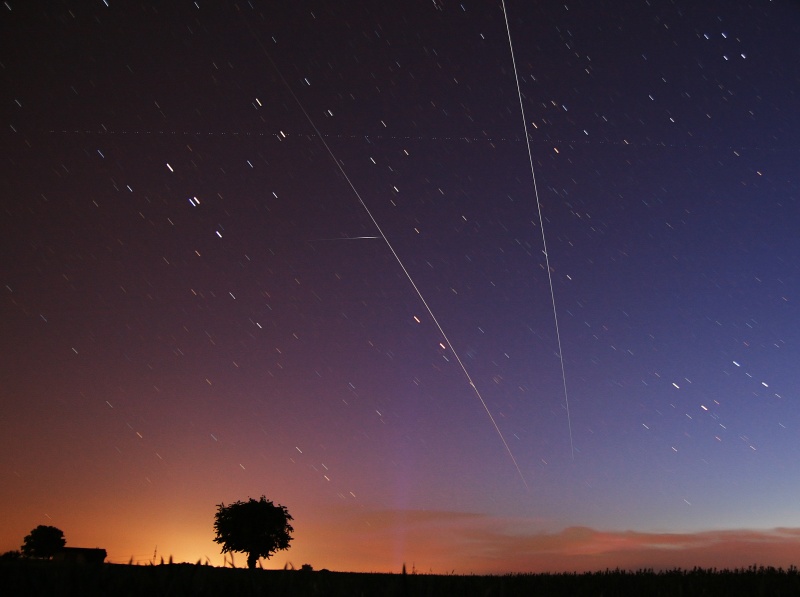
|
Credit: Jürgen Michelberger
Explanation:
Bathed in sunlight, the
International Space Station
(ISS) arced
through the evening sky above the town of Lauffen in
southern Germany on May 31st.
The timing of the
bright passage was about 10 minutes after
the launch of the Space Shuttle Discovery on the
STS-124 mission
from Kennedy Space Center, Florida, in the southeastern US.
Of course, Discovery
was headed toward an orbital rendezvous with the ISS.
In chasing after the space station, the shuttle also made
a pass over Lauffen just 21 minutes after launch.
With a camera fixed to a tripod,
astronomer Jürgen Michelberger recorded both
magnificent machines streaking overhead
in two different time exposures, each about 2 minutes long,
and merged them in this composite view.
Parallax causes the paths of the ISS (right) and Discovery (near center)
to seem to diverge as they were at very different altitudes.
Stars (and bright planets) leave two, separated, short trails.
The brief, flaring track of an Iridium
satellite and faint dotted
trail of a passing airplane are also visible.
A close inspection will reveal a dim reddish track,
the jettisoned external
fuel tank, just left of Discovery.
Placing your cursor over the picture should help identify some of the
features.
|
January February March April May June July August September |
| |||||||||||||||||||||||||||||||||||||||||||||||||||||||
NASA Web Site Statements, Warnings, and Disclaimers
NASA Official: Jay Norris. Specific rights apply.
A service of: LHEA at NASA / GSFC
& Michigan Tech. U.
Based on Astronomy Picture
Of the Day
Publications with keywords: ISS - international space station - space shuttle Discovery
Publications with words: ISS - international space station - space shuttle Discovery
See also:
- The International Space Station Transits the Sun
- The International Space Station Expands Again
- Dextre Robot at Work on the Space Station
- A Supply Ship Docks with the International Space Station
- APOD: 2008 April 1- New Space Station Robot Asks to be Called Dextre the Magnificent
- ISS: Sunlight to Shadow
- Columbus Laboratory Installed on Space Station
